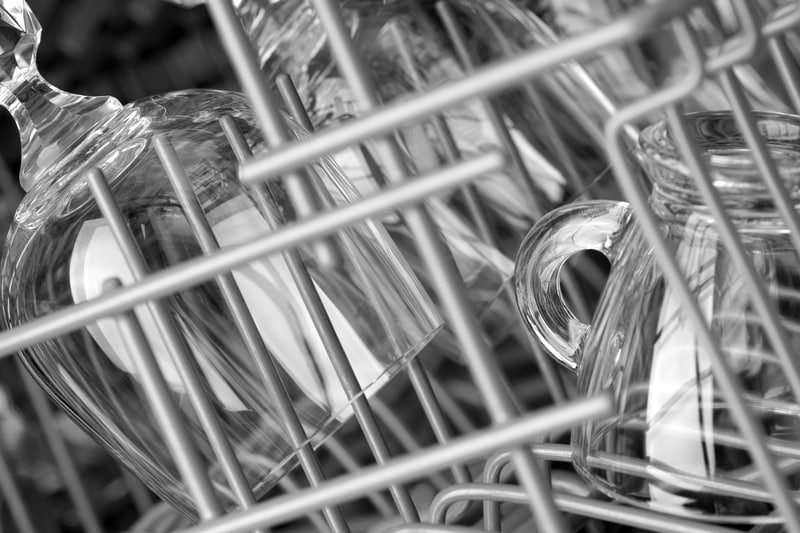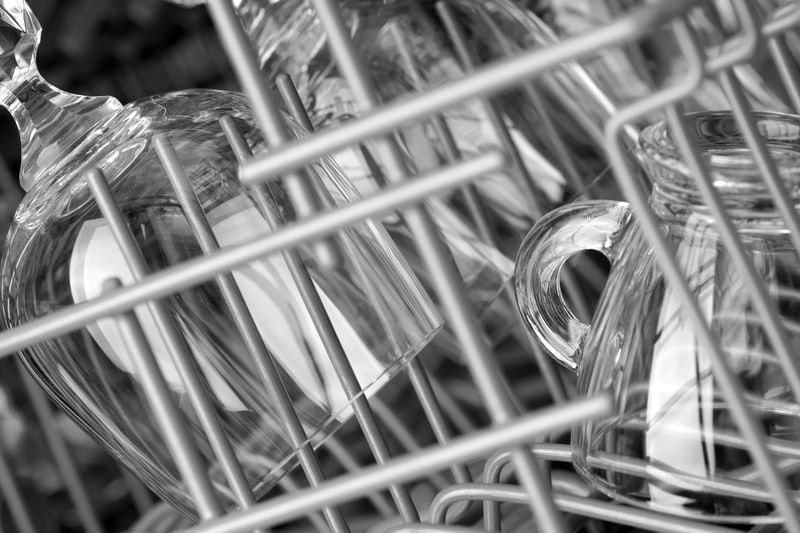You've set the table for a special occasion. The candles cast their soft glow over your sparkling cutlery, and your serviettes are folded into the perfect white swan. Your glassware, however, is marred by unsightly watermarks.
These persistent blemishes not only dampen the elegance of your dinner setting but also raise questions about the effectiveness of your cleaning routine.
Many households experience the frustration of watermarks on their glassware, and this occurs for several reasons. We’re exploring some of these along with a potential solution to your smudgy glass woes.
Understanding Watermarks on Glassware
To effectively tackle the problem of watermarks on glassware, it's necessary to understand the two primary culprits behind these blemishes: hard water and the interaction of detergents.
Hard Water: The Mineral Culprit
Hard water is a common issue in many households. It's characterised by high levels of minerals, particularly calcium and magnesium. These minerals dissolve in the water as it travels through soil and rocks.
When water evaporates from the surface of glassware, it leaves behind these minerals, resulting in the cloudy, white deposits known as watermarks. The severity of watermarks often correlates with the hardness of the water. In areas with exceptionally hard water, glassware is more prone to these unsightly marks.
Detergents: The Chemical Interaction
The role of detergents in the formation of watermarks is nuanced. While detergents are essential for cleaning, their interaction with the minerals in hard water can sometimes worsen the watermark problem.
Detergents contain various chemicals designed to break down and remove food residues and stains. However, when used with hard water, these chemicals can react with the minerals, reducing their effectiveness in cleaning.
This reaction can leave behind residues that cause watermarks and may make them more difficult to remove. The effectiveness of detergents varies based on the composition of the water, and using the wrong type of detergent for your water type can worsen the watermark issue.
Understanding the dual roles of hard water and detergents is crucial in addressing the watermark problem. By acknowledging these factors, we can better approach the issue and find effective solutions, such as using water-softening systems or choosing the right type of detergent to reduce or eliminate watermarks on glassware.
The Role of Dishwashers
Modern dishwashers, like the Beko Freestanding Dishwasher (BDW 101), are designed to tackle this problem head-on. This model boasts features specifically addressing water hardness, ensuring that glassware comes out sparkling clean. It employs advanced water-softening technology to reduce mineral content, which is a key factor in the formation of watermarks.
By softening the water, the dishwasher prevents the deposition of minerals on your glassware.
Additional Tips to Avoid Watermarks
While technology plays a pivotal role, there are additional measures you can take to avoid watermarks on glassware:
1. Use Rinse Aid: Rinse aids are designed to accelerate the drying process, thus reducing the likelihood of mineral deposits.
2. Pre-rinse: If you live in an area with particularly hard water, pre-rinsing your glassware can help mitigate the effects of mineral deposits.
3. Proper Loading: Ensure that glassware is spaced adequately in the dishwasher to allow for effective water flow and drying.
Further Benefits of the Beko Dishwasher
Beyond its watermark prevention capabilities, the Beko BDW 101 offers other benefits that make it a wise choice for discerning customers:
1. Energy Efficiency: It's designed to be energy-efficient, reducing both your electricity bill and environmental footprint.
2. Large Capacity: With a 15-place setting capacity, it's ideal for large families or entertaining guests.
3. Advanced Cleaning Options: The dishwasher has multiple wash settings to cater to different types of utensils and levels of soiling.
Better with Beko
Yes, watermarks on glassware are a common annoyance that stems from the natural mineral content in water and the chemical action of detergents. By understanding these causes and employing strategies (like using a high-quality dishwasher), you can significantly reduce the occurrence of these marks.
Not only does this dishwasher help in keeping your glassware pristine, but it also offers additional benefits that make it an excellent investment for your home. Remember, tackling watermarks is not just about cleanliness; it's about ensuring that every aspect of your home dining experience is as perfect as it can be.



